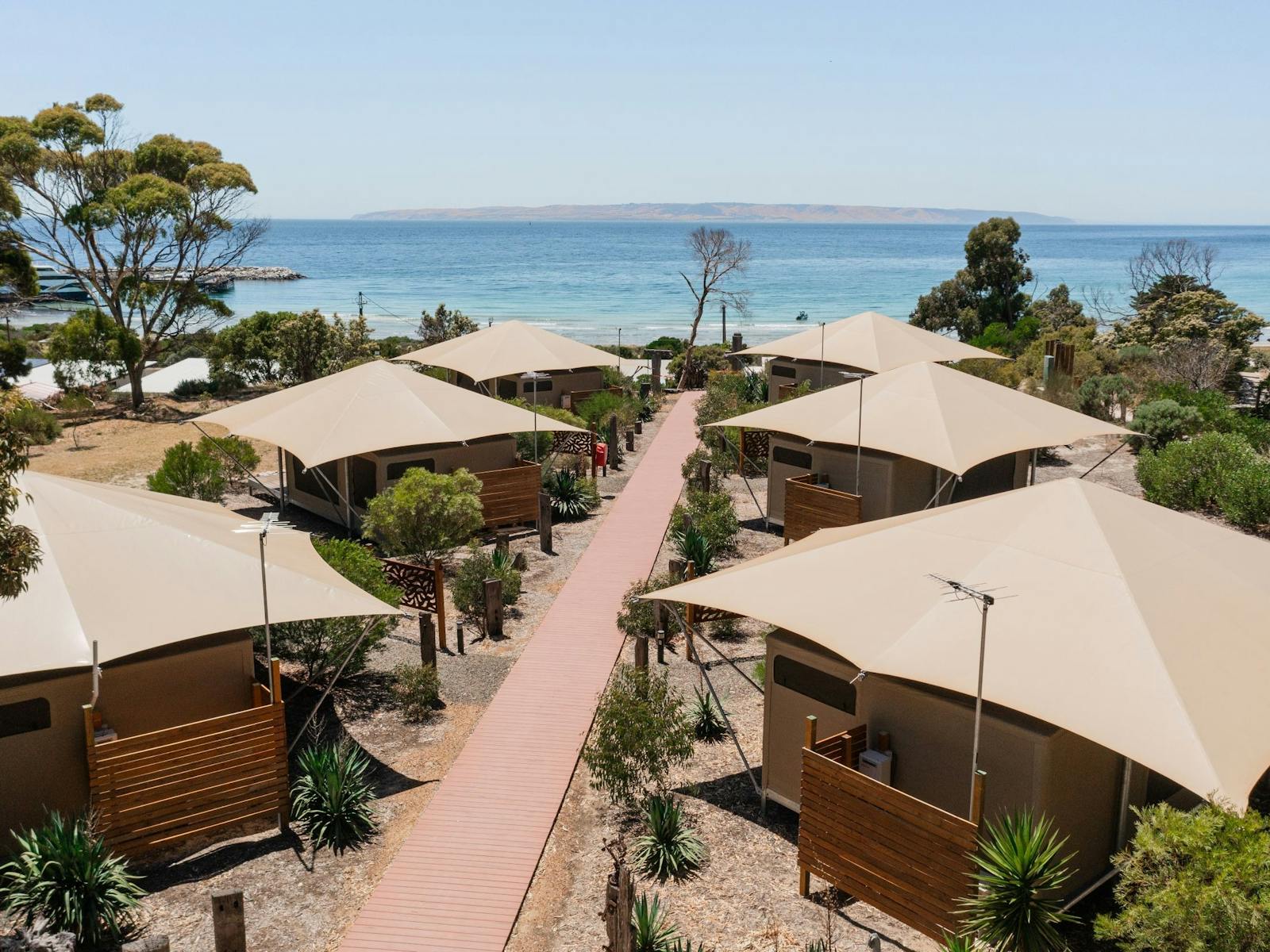Colonies of Long-nosed Fur-seals are thriving and showing signs of recovery following their decimation from commercial sealing during the nineteenth century. The shores of Kangaroo Island are now home to several populations of these seals numbering over 100,000.
Long-nosed fur seal facts
Long-nosed Fur-seals range in size but can grow to around 2 metres and upwards of 250 kilograms for a fully grown adult male. They have a pointed nose, long whiskers and external ears. Adult males are a dark grey to brown colour with a thick ‘blonde’ mane. Adult females are grey to brown on their back and are slightly lighter underneath.
Carnivorous and opportunistic they generally feed on squid and a variety of small bait fish, hunting in the open ocean between 50 and 1,000 kilometres off the coast. Long-nosed Fur-seals feed near the surface of the water and occasionally take small sea birds, although this is less common. They live along rocky shores around Kangaroo Island where they rest and breed in colonies.
Where to find them
Long-nosed Fur-seals (or New Zealand Fur-seals) are native to south-eastern Australia and found all along the South Australian coastline. Viewing is guaranteed at the resident population in Flinders Chase National Park at Admirals Arch, where you can watch these seals play, frolic, and rest amongst the rocky shoreline from the safety of the viewing platform. For the more intrepid and experienced hiker, the 34 kilometre long, Cape Gantheaume Coastal Trek in the Cape Gantheaume Wilderness Protection Area will also meander past a resident colony of fur seals. An isolated unmarked track, ensure you do your research before embarking on this adventure. You will also come across a resident pod at the Kingscote Jetty. They can regularly be seen in the water along the seafront, frolicking and resting with their fins up and out of the water.
How to watch them
Watching seals safely from a viewing platform is the best option, it is surprising how quickly seals can move, even on land. If you encounter a seal in the wild, watch them from at least 30 metres and be aware as they can become aggressive when they feel threatened. The viewing platform at Admirals Arch provides a close view, in their natural habitat, from a safe location. You can watch Long-nosed Fur-seals play and chase on the rocks and frolic in the shallow waves as they go about their day feeling uninterrupted by their human observers.
Did you know?
Long-nosed Fur-seals are commonly seen from the viewing platform at Admirals Arch floating on the surface on their side with one flipper in the air. They are not waving at visitors, but resting in the water, with one fin up and one down, they can feel the directions of the wind and water movement and assist in keeping balanced.
Long-nosed Fur-seals can dive up to 380 metres, the deepest of all the fur seals, and whilst seemingly clumsy on land they effortlessly and gracefully glide through the ocean, even when at its most treacherous.














